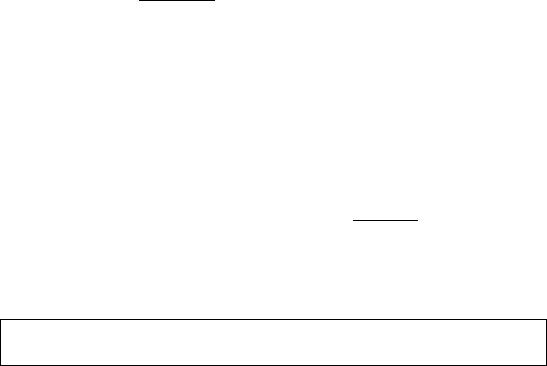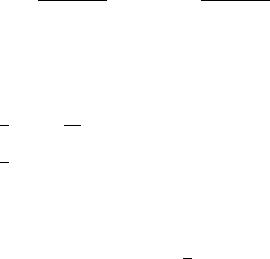
- •Functions
- •The Concept of a Function
- •Trigonometric Functions
- •Inverse Trigonometric Functions
- •Logarithmic, Exponential and Hyperbolic Functions
- •Limits and Continuity
- •Introductory Examples
- •Continuity Examples
- •Linear Function Approximations
- •Limits and Sequences
- •Properties of Continuous Functions
- •The Derivative
- •The Chain Rule
- •Higher Order Derivatives
- •Mathematical Applications
- •Antidifferentiation
- •Linear Second Order Homogeneous Differential Equations
- •Linear Non-Homogeneous Second Order Differential Equations
- •Area Approximation
- •Integration by Substitution
- •Integration by Parts
- •Logarithmic, Exponential and Hyperbolic Functions
- •The Riemann Integral
- •Volumes of Revolution
- •Arc Length and Surface Area
- •Techniques of Integration
- •Integration by formulae
- •Integration by Substitution
- •Integration by Parts
- •Trigonometric Integrals
- •Trigonometric Substitutions
- •Integration by Partial Fractions
- •Fractional Power Substitutions
- •Numerical Integration
- •Integrals over Unbounded Intervals
- •Discontinuities at End Points
- •Improper Integrals
- •Sequences
- •Monotone Sequences
- •Infinite Series
- •Series with Positive Terms
- •Alternating Series
- •Power Series
- •Taylor Polynomials and Series
- •Applications
- •Parabola
- •Ellipse
- •Hyperbola
- •Polar Coordinates
- •Graphs in Polar Coordinates
- •Areas in Polar Coordinates
- •Parametric Equations
4.5. LINEAR NON-HOMOGENEOUS SECOND ORDER DIFFERENTIAL EQUATIONS179
4.5Linear Non-Homogeneous Second Order Di erential Equations
Theorem 4.5.1 (Variation of Parameters) Consider the equations
y00 |
+ p(x)y0 |
+ q(x)y = r(x) |
(1) |
y00 |
+ p(x)y0 |
+ q(x)y = 0. |
(2) |
Suppose that y1 and y2 are any two linearly independent solutions of (2).
Then the general solution of (1) is |
W (y1, y2) dx − y1(x) Z |
W (y1, y2) dx . |
y(x) = c1y1(x) + c2y2(x) + y2(x) Z |
||
|
y1(x)r(x) |
y2(x)r(x) |
Proof. It is already shown that c1y1(x)+c2y2(x) is the most general solution of the homogeneous equation (2), where c1 and c2 are arbitrary constants. We observe that the di erence of any two solutions of (1) is a solution of (2).
Suppose that y (x) is any solution of (1). We wish to find two functions,
u1 and u2, such that |
|
y (x) = u1(x)y1(x) + u2(x)y2(x). |
(3) |
By di erentiation of (3), we get |
|
y 0(x) = (u10 y1 + u20 y2) + (u1y10 + u2y20 ). |
(4) |
We impose the following condition (5) on u1 and u2: |
|
u10 y1 + u20 y2 = 0. |
(5) |
Then |
|
y 0(x) = u1y10 + u2y20
y 00(x) = (u1y100 + u2y200) + u01y10 + u02y20 .
Since y (x) is a solution of (1), we get r(x) = y 00 + p(x)y 0 + q(x)y
=(u1y100 + u2y200) + (u01y10 + u02y20 ) + p(x)[u1y10 + u2y20 ]
+q(x)(u1y1 + u2y2)
=u1[y100 + p(x)y10 + q(x)y1] + u2[y200 + p(x)y20 + q(x)y2]
+(u01y1 + u02y20 )
=u01y10 + u02y20 .

180 |
CHAPTER 4. APPLICATIONS OF DIFFERENTIATION |
|
Hence, another condition on u1 and u2 is |
|
|
|
u10 y10 + u20 y20 = r(x). |
(6) |
By solving equations (5) and (6) simultaneously for u01 and u02, we get
u10 = |
−y2r(x) |
and u20 (x) = |
y1r(x) |
. |
(7) |
|
y1y20 − y2y10 |
y1y20 − y2y10 |
|||||
|
|
|
|
The denominator of the solution (7) is the Wronskian of y1 and y2, which is not zero for any x since y1 and y2 are linearly independent by assumption. By taking the indefinite integrals in equation (7), we obtain u1 and u2.
u1(x) = − Z |
W (y1, y2) dx |
and u2(x) = Z |
W (y1, y2) dx. |
|
y2(x)r(x) |
|
y1(x)r(x) |
By substituting these values in (3), we get a particular solution
y (x) = y2u2 + y1u1 |
, y2) dx − y1(x) Z |
|
= y2(x) Z |
W (y1 |
|
|
y1(x)r(x) |
|
y2(x)r(x) dx. W (y1, y2)
This solution y (x) is called a particular solution of (1). To get the general solution of (1), we add the general solution c1y1(x) + c2 y2(x) of (2) to the particular solution of y (x) and get
y(x) = (c1y1(x) + c2y2(x)) + |
y2 |
(x) Z W (y1, y2) dx − y1(x) Z |
W (y1, y2) dx . |
|
|
|
|
y1(x)r(x) |
y2(x)r(x) |
This completes the proof of this theorem.
Remark 17 The general solution of (2) is called the complementary solution of (1) and is denoted yc(x).
yc(x) = c1y1(x) + c2y2(x).
The particular solution y of (1) is generally written as yp.
yp = y2 |
Z |
W (y11, y2) dx − y1 |
Z |
W (y12, y2) dx. |
|
|
r(x)y (x) |
|
r(x)y (x) |
The general solution y(x) of (1) is the sum of yc and yp,
y = yc(x) + yp(x).

4.5. LINEAR NON-HOMOGENEOUS SECOND ORDER DIFFERENTIAL EQUATIONS181
Example 4.5.1 Solve the di erential equation y00 + 8y0 + 12y = e−3x.
We find the general solution of the homogeneous equation y00 + 8y0 + 12y = 0.
We let y = emx be a solution. Then y0 = memx, y00 = m2emx and
m2emx + 8memx + 12emx = 0
m2 + 8m + 12 = 0 m = −6, −2.
So,
yc(x) = Ae−6x + Be−2x
is the complementary solution. We compute the Wronskian
W(e−6x, e−2x) = e−6x(−2)e−2x − e−2x(−6)e−6x
=e−8x(−2 + 6)
=4e−8x
|
6= 0. |
|
|
|
|
|
|
|
|
|
|
||||
By Theorem 4.4.1, the particular solution is given by |
|
|
|||||||||||||
yp = e−2x Z |
|
e−6x |
e−3x |
|
|
|
|
e−2x |
e−3x |
||||||
· |
|
|
dx − e−6x Z |
|
· |
|
dx |
||||||||
|
|
|
4e− |
|
|
|
|||||||||
|
|
|
8x |
|
|
4e− |
8x |
||||||||
= e−2x Z |
|
4 e−xdx − e−6x |
Z |
|
4 e3xdx |
|
|
|
|||||||
|
|
1 |
|
|
|
|
|
|
|
1 |
|
|
|
|
|
= −e−2x |
|
|
|
|
− e−6x |
|
|
|
|
|
|
||||
4 e−x |
4 e3x |
|
|
|
|||||||||||
|
1 |
|
|
|
|
|
1 |
|
|
|
|
|
|||
=−14 e−3x − 121 e−3x
=−13 e−3x.
The complete solution is the sum of the complementary solution yc and the particular solution yp.
y(t) = Ae−6x + Be−2x − 31 e−3x.
182 CHAPTER 4. APPLICATIONS OF DIFFERENTIATION
Exercises 4.5 Find the complementary, particular and the complete solution for each of the following. Use tables of integrals or computer algebra to do the integrations, if necessary.
1. |
y00 |
+ 4y = sin(3x) |
2. |
y00 |
− 9y = e2x |
3. |
y00 |
+ 9y = cos 2x |
4. |
y00 |
− 4y = e−x |
5. |
y00 |
− y = xex |
6. |
y00 |
− 5y0 + 6y = 3e4x |
7. |
y00 − 4y0 + 4y = e−x |
8. |
y00 + 5y0 + 4y = 2ex |
||
9. |
my00 − py0 = mg |
10. |
y00 + 5y0 + 6y = x2e2x |
||
In exercises 11–20, compute the complete solution for y.
11.y00 + y = 4x, y(0) = 2, y0(0) = 1
12.y00 − 9y = ex, y(0) = 1, y0(0) = 5
13.y00 − 2y0 − 3y = 4, y(0) = 2, y0(0) = −1
14.y00 − 3y0 + 2y = 4x
15.y00 + 4y = sin 2x
16.y00 − 4y = e2x
17.y00 − 4y = e−2x
18.y00 + 4y = cos 2x
19.y00 + 9y = 2 sin 3x + 4 cos 3x
20.y00 + 4y0 + 5y = sin x − 2 cos x
